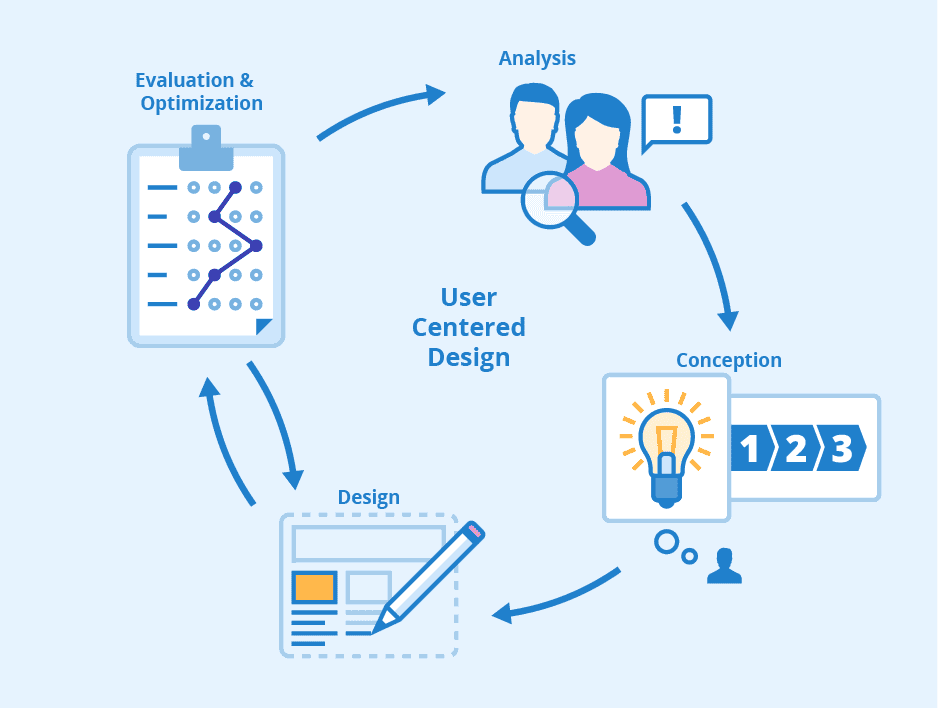Designing user experience (UX) relies heavily on psychology and understanding how psychological principles impact human behavior. This enables designers to create products that bring particular reactions and behaviors from your users.
But what makes a great UX design? And what role does psychology play in its creation?
Psychology: The Key to Great UX Design
At its core, UX design is about understanding human behavior and how people interact with technology. This is where psychology comes in.
A good UX designer must have a deep understanding of human cognition, perception, and decision-making. By applying psychological principles, designers can create interfaces that are more efficient, effective, and engaging.
Here are 5 psychological principles that can enhance the functionality, visual appeal, and efficacy of your designs.
Mental Models
Mental models are an important psychological concept in UX design. They refer to the internal representations that people create to understand and interact with the world around them. These models are based on a person’s past experiences, knowledge, and assumptions, and they help them make sense of new information and situations.
In the context of UX design, it’s important for designers to understand users’ mental models. By doing so, they can create interfaces that align with users’ expectations and make sense to them.
For instance, if users are accustomed to a certain type of navigation menu, such as a drop-down menu or a hamburger menu, deviating from that may cause confusion and frustration.
Hick’s Law
Hick’s Law is a psychological principle that states that the time it takes for a person to make a decision increases as the number of choices increases. This principle has important implications for UX design, as it suggests that presenting users with too many options can lead to decision paralysis and frustration.
This means that designers should aim to keep interfaces simple and uncluttered, giving users with only the most important options. This can be achieved by prioritizing content and features based on user needs and goals, and avoiding unneeded complexity and clutter.
One way to simplify interfaces is to use progressive disclosure, which involves presenting information and options gradually, rather than all at once. For example, a mobile app may use a series of screens or menus to guide users through a multi-step process, rather than presenting all the options on a single screen.
Another way to simplify interfaces is to use visual hierarchy to draw attention to the most important elements. This can be accomplished through the use of color, contrast, size, and placement.
For example, a call-to-action button may be larger and more prominently placed than other interface elements, making it easier for users to find and click.
Gestalt Principles
One of the most important Gestalt principles for UX design is the principle of proximity. This principle suggests that objects that are close together are perceived as a group.
For instance, if a web page has several buttons that are placed close together, users will perceive them as a single group rather than as separate elements. This principle can be used by UX designers to create interfaces that are visually coherent and easy to navigate.
Another important principle that designers should note is the principle of similarity. This principle suggests that objects that are similar in appearance are perceived as a group. Take for example a web page that has several buttons that are all green. Users will perceive them as a single group rather than as separate elements. This principle can be used to create interfaces that are visually consistent and easy to understand.
Other Gestalt principles that are relevant to UX design include the principle of closure, which suggests that humans tend to fill in missing information to create complete objects, and the principle of continuity, which suggests that humans tend to see objects as having a smooth and continuous motion.

Fitts’s Law
Fritts’s Law has important implications for the design of buttons, links, and other interactive elements. According to the law, it takes less time to click on a large target that is close by than a small target that is far away. This means that designers should make important buttons and links larger and easier to click, reducing the chance of errors and improving efficiency.
There are several ways that designers can apply this law to UX design. One approach is to use larger and more prominent buttons and links for important actions, such as “Add to cart” or “Submit.” This can make it easier for users to find and click these elements, reducing the chance of errors and increasing the speed of interactions.
Another approach is to use visual cues, such as color or contrast, to draw attention to important interactive elements. For example, a button with a contrasting color or a larger font size may be more noticeable and easier to click than a smaller, less prominent button.
Finally, designers can also consider the layout and organization of interactive elements to reduce the distance that users need to travel to reach important targets. This may involve re-arranging or re-structuring the interface to bring often-used elements closer to the user, or using progressive disclosure to present options gradually rather than all at once.
Confirmation Bias
Confirmation bias is a common cognitive bias that refers to the tendency to seek out and interpret information in a way that confirms one’s pre-existing beliefs or hypotheses, while ignoring or discounting information that contradicts them. This bias can have a powerful influence on decision-making, and can lead people to make flawed judgments or to overlook important information.
For UX, confirmation bias can be a big challenge, as users may approach a website or application with pre-existing expectations or biases about how it should work. For example, a user may assume that a particular feature works in a certain way, based on their prior experience with similar products or interfaces.
If the designer reinforces these assumptions in the design of the interface, the user may be less likely to explore alternative ways of using the product or to discover new features that could be useful.
To avoid confirmation bias in UX, designers should strive to create interfaces that challenge users’ assumptions and encourage exploration. This may involve using novel or unexpected design elements, presenting information in a way that is different from what users are accustomed to, or using interactive elements that prompt users to engage with the interface in new ways.
In the end, avoiding confirmation bias in UX design is about creating interfaces that are open and flexible, and that encourage users to approach the product with a spirit of curiosity and exploration. By doing so, designers can create interfaces that are more engaging, more effective, and more satisfying for users.
Final Thoughts
Incorporating psychological concepts into the design process can help UX designers create interfaces that are visually appealing, intuitive, functional, and enjoyable to use. The ultimate goal of great UX design is to make users’ lives easier, more efficient, and more enjoyable.
By leveraging an understanding of the psychology behind human behavior, UX designers can create interfaces that not only meet users’ needs but exceed their expectations, delivering an exceptional user experience.
By keeping the human element at the forefront of a design approach, UX designers can help to ensure that the products and services they create are successful in meeting user needs and achieving business objectives.



